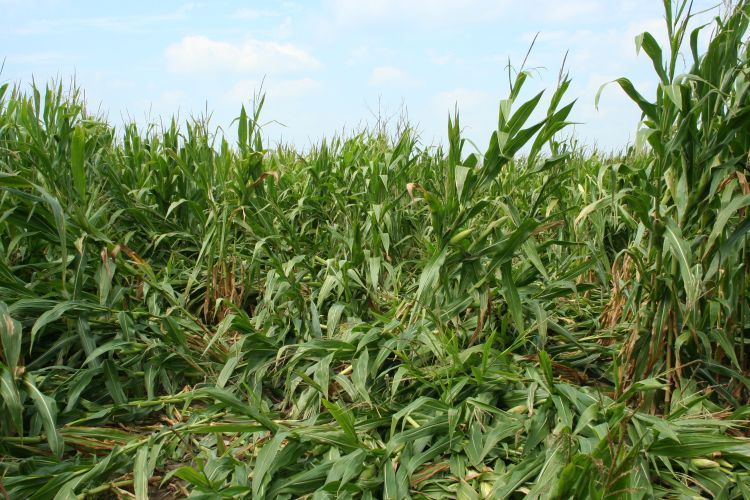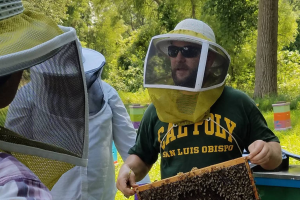Overuse of Bt Corn Leads to Pest Resistance in U.S. Corn
A new study co-authored by MSU entomologist Christina DiFonzo found that overuse of genetically modified Bt corn in the U.S. Corn Belt has led to widespread resistance in corn rootworm populations, reducing the crop's effectiveness and profitability.

A new study published in Science journal co-authored by MSU Entomologist Christina DiFonzo found that corn that has been genetically modified to resist a common pest has been overplanted, resulting in a decrease in its efficacy as pests evolve to resist its effects.
In the study “Too Much of a Good Thing: Lessons From Compromised Rootworm Bt Maize in the U.S. Corn Belt,” the authors examined Bt corn seeds with traits engineered to resist corn rootworm (Diabrotica virgifera virgifera), a pest that damages corn roots and reduces both standability and yield.
The study was the result of a large partnership between DiFonzo and 19 co-authors from 12 universities in the U.S., China and Canada. Researchers combined 12 years of Bt corn field trial data and information on farmers’ seed usage across the US Corn Belt. Their goal was to evaluate potential overuse of rootworm Bt corn.
Bt corn is genetically modified to make versions of toxins produced by Bacillus thuringiensis (Bt), a naturally occurring bacterium that is toxic to certain insects when ingested. First approved in 1996 to target ear-feeding caterpillars, additional traits were introduced later to control corn rootworm. Corn hybrids are now typically sold with multiple toxins for both pests. In 2024, 86% of the corn acres in the US were planted to Bt hybrids.
The US Corn Belt is a geographical region of the midwestern United States that has the highest production of corn. It includes roughly 13 states and can be divided further into the Eastern Corn Belt and the Western Corn Belt. The eastern and western belts are split based on their production of corn, with the west being an intense producer of corn with little crop rotation, while the eastern belt plays a smaller role in corn production and often rotates fields with other crops.
Bt corn has since been widely used to protect crop yields from corn rootworm in both the eastern and western corn belts. However, this research suggests that relying too heavily on it could have unintended consequences. “Money can be replaced, but loss of susceptibility to the technology only goes in one direction and is irreversible,” DiFonzo explained.
The introduction of Bt corn has helped reduce the threat of corn rootworm over the past 12 years, decreasing the need for Bt corn in some areas. However, this research found that its use has not declined accordingly. This overuse has led to negative effects, as corn rootworm has gradually developed resistance to the corn's pesticidal properties. The authors suggest that moderating the use of Bt corn to align with the current threat of corn rootworm specific to that region would be best to prevent further damage by resistant corn rootworms.
The impact of this overuse can be seen in farmers’ profits as more and more of their corn now falls victim to corn rootworm with little ability to prevent it, as the main strategy has been to plant Bt corn.
“Corn rootworm becomes an issue when crops aren't being rotated; it can only survive on corn. It isn’t an issue if you’re rotating your crops regularly” said DiFonzo. In the east, corn rootworm is less of a problem, but the hybrids being sold to farmers include traits that Eastern Corn Belt farmers don’t necessarily need, costing them money. Overuse has resulted in widespread resistance in the west, highlighting the importance of adjusting use in the east to prevent the same outcome.
DiFonzo compared bundled Bt seed traits to cable TV packages, where consumers pay for hundreds of channels just to get the few they really want. Similarly, farmers may be paying for traits they don’t need, “[They] would welcome a similar ‘pick list’ for the seed supply, and that would help insect resistance management,” DiFonzo said.
To help farmers make informed decisions about their seed choices, DiFonzo co-created the Handy Bt Trait Table for U.S. Corn Production, a valuable resource that outlines available Bt traits, their targets, and other key information.



 Print
Print Email
Email
